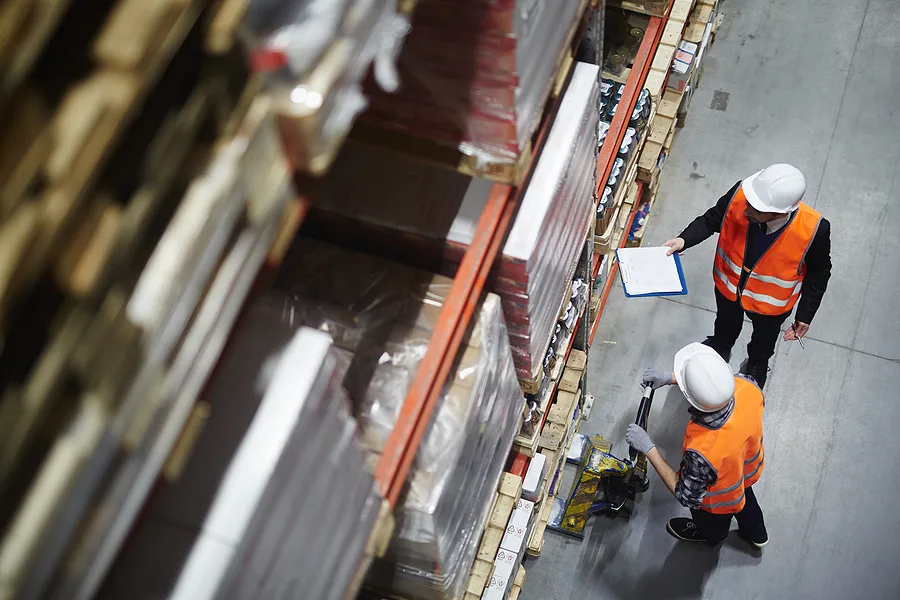
Striking Gold: Discovering New Ways to Dig Up Savings in Your Warehouse
As a Warehouse Manager, you’re under constant pressure to increase throughput and reduce inventory cycles while cutting costs and finding good workers. Year after year, you’re challenged to handle and store larger volumes of inventory and material more efficiently. Adding external pressures to the equation drive the need for higher productivity and throughput—such as shrinking operating margins, stretched supply chains and rising customer demands due to the “Amazon Effect”—and it’s clear that warehouse professionals need to find new solutions to keep pace.
Thankfully, there are several basic cost-saving tasks you can do to help your warehouse meet these demands. And no, it doesn’t involve dumping funds into more forklifts or hiring more workers. Warehouse automation technologies are available that can accelerate your current business processes within your existing infrastructure to help you control costs, reduce labor demands and increase operational performance.
Cost Saving Technologies in the Warehouse
Warehouse automation takes many forms, but perhaps the most cost-effective technology is mobile barcoding. Mobile barcoding involves using mobile devices, barcodes and flexible software to extend your ERP inventory data so that workers can transact materials through the warehouse from point-of-use, updating the ERP database in real time.
LEARN MORE: Mobile barcoding and enterprise data collection »
Here are some of the ways mobile barcoding can help you uncover large savings opportunities in your warehouse:
Get Rid of Excess Inventory
Excess inventory adds cost to the supply chain. If it doesn’t sell, it sits in your warehouse taking up valuable space, not to mention the depreciation of that inventory’s value while it gathers dust. Mobile barcoding can help your warehouse gain visibility into inventory stock levels and movements as they occur, enabling you to reduce carrying stock—and save storage, handling and depreciation costs in the process.
Real-time transparency into inventory flows can help you reduce stock levels on slow-moving products, understand which items are moving with higher velocity, and optimize order sizes and purchasing frequency.
ALSO READ: 5 Ways to Reduce an Outsized Inventory »
Free Up Warehouse Space
Clutter is the bane of productivity. Fortunately, one of the benefits of reducing on-hand inventory is that it frees up additional warehouse space. When you don’t have warehouse automation technologies like mobile barcoding or directed-movement WMS functionality, slow-moving inventory processes can lead to pallets of materials piling up in front of more popular product, constricting movement and order picking.
However, technology cannot solve physical space problems on its own. The need to reconfigure racks and maximize use of vertical and cube space is essential. Take the time to rework your floor plan, if necessary. Aim to make fast-moving items easily accessible while storing slow movers out of the way of traffic.
A cleaner, safer workspace not only makes it easier for your team to perform their jobs but also makes them feel protected from careless or unnecessary exposure to harm.
Mobilize for Higher Productivity
The gold nugget of cost savings comes from mobile barcoding’s ability to create significant gains in worker productivity and efficiency, thus maximizing your labor investment. Workers equipped with mobile devices ensure valuable inventory data is collected accurately and quickly via barcode scanners, handheld computers or tablets. Since data is captured without having to rely on manual data entry, handwritten notes or by commuting back to a fixed workstation, inventory can be received, stored, transferred, picked, packed and shipped with a quick scan.
Since most employees are already familiar with smartphones and mobile operating systems like Android and iOS, learning to use modern barcode scanning technology is easy, intuitive, and requires minimal training.
CONTINUE READING: Adopting Enterprise Mobility in the Supply Chain »
Faster, Tighter Inventory Control
Keeping track of thousands—or millions—of items manually is no way to run a warehouse. No one can gain an accurate picture of inventory movements, what actual stock levels are at any given time, or how accurate those recorded inventory levels actually are (hint: the average is 60%). Errors and delays from an unexpected stock-out, compounded with inefficient workflows that hold up processes downstream, can create a delay in receiving that subsequently delays putaway, picking and other outbound activities.
In the end, your customer pays the price for your warehouse’s inefficiencies. One way or another, your bottom line is going to suffer.
Instead, warehouses should have appropriate inventory control systems in place to manage large volumes of items, day-in and day-out. Real cost savings in the warehouse begins with automation. Technologies like mobile data collection and barcoding have direct cost benefits, such as helping reduce lost inventory, shrinkage, misplacement and shipping errors.
But automation also has beneficial ripple effects upstream. Automated real-time data collection helps prevent and eliminate excess inventory, accelerating end-to-end inventory workflows. In addition, modern technology is also attractive to employees, who gravitate to workplaces willing to offer tools to make their jobs easier and more productive.
In the end, warehouse automation technologies, like mobile barcoding, won’t clean your warehouse, but they can help you realize hidden cost savings and higher performance in warehouse operations without adding space or hiring more workers.
You could even say…it’s like hitting a gold mine.

Tomorrow’s Warehouse Today
Learn how implementing cutting-edge technologies can provide multiple points of operational efficiency.








